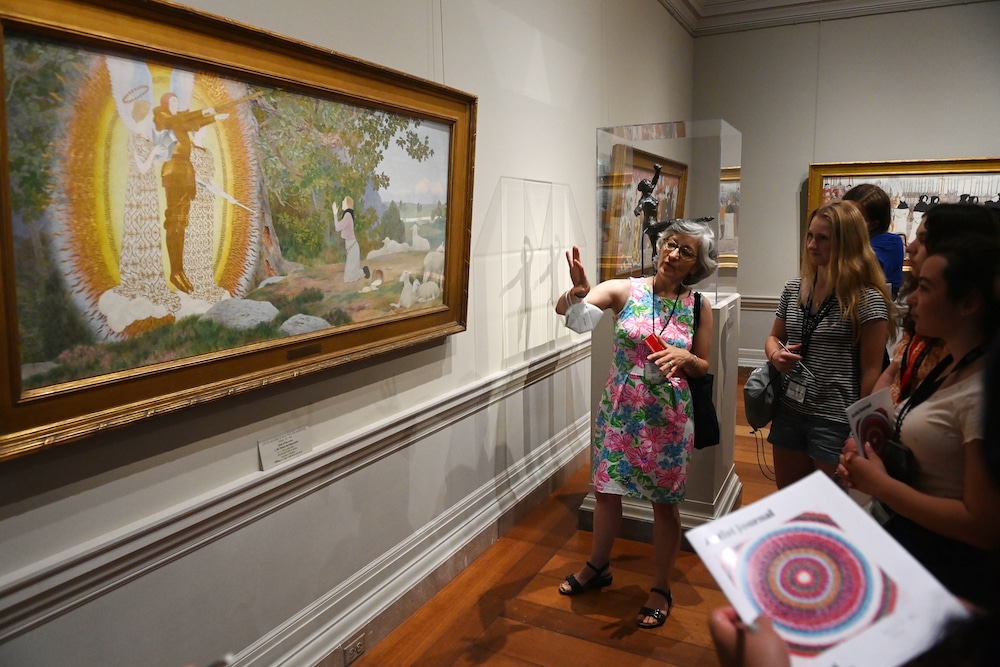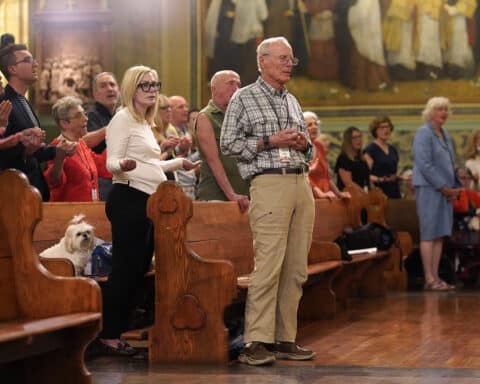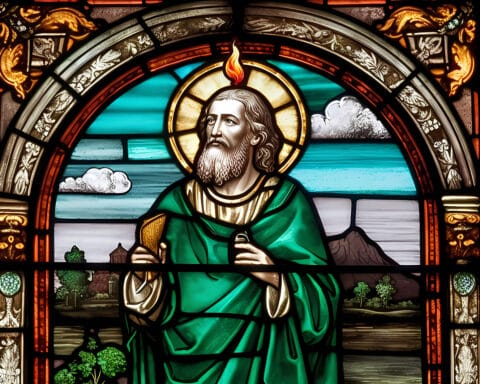As an artist and graphic designer, Becca Saladin Segovia brings historical figures to life by illustrating what they may have looked like in reality. One of the most popular requests she receives, she says, is for St. Joan of Arc.
“I work on the faces of many historical figures, but Joan’s story has always been a favorite of mine,” she told Our Sunday Visitor. “I also wanted to bring her to life since there aren’t many sources for her appearance, and no images, so I wanted people to have something to visualize when they think of Joan.”
On her YouTube channel, Saladin Segovia walks viewers through her recreations of people from the past, from Abraham Lincoln and Harriet Tubman to Anne Boleyn and Shakespeare. She does this through Royalty Now Studios, the documentary branch of her company Royalty Now, which exists “to bring the past closer to us by making images from history more lifelike.”
Two of her videos, one in May 2021 and another in May 2023, reimagine the saint who fought for God and her country around her feast day on May 30.
Joan of Arc — known as Jeanne d’Arc in her home country of France — fought in the Hundred Years’ War against the English. The French peasant, celebrated for liberating Orléans and leading Charles VII of France to the throne, died at the stake in 1431 after being convicted of heresy. She was just 19 years old.
“Joan’s story is incredible; she accomplished things that no one else could accomplish, and she did it all as a very young woman,” Saladin Segovia described the Maid of Orléans.
Her latest video shows what Joan of Arc might have looked like then — and today.
“It sounds silly, but I think a lot of people (me included) sometimes forget historical figures were actually real people,” she said. “I just want viewers to remember she was a real girl.”
Viewers who watch until the end will get to see Joan of Arc blink at them from a suit of armor — and then smile at them while wearing modern-day clothing.
While narrating the video, Saladin Segovia emphasizes that her re-creation is mostly an artistic depiction using contemporary descriptions and some influence from a statue head found in Orléans once rumored to be modeled after the saint.
She fashions Joan of Arc as a short and muscular woman with short, dark hair and large, dark eyes. Her skin appears tan and sunburnt.
“Luckily, there are quite a few contemporary descriptions of Joan from her lifetime, preserved in records and correspondence,” Saladin Segovia said.
In the video description, Saladin Segovia names her primary source as jeanne-darc.info, a self-described web project to collect, record and publish the history of the saint. As an open-content resource, it does not guarantee the validity of its information.
An expert’s take
Nora M. Heimann, an associate professor of art history at The Catholic University of America, specializes in religious art, and St. Joan of Arc in art and culture, with two books focusing on the saint: “Joan of Arc: Her Image in France and America,” and “Joan of Arc in French Art and Culture (1700-1855): From Satire to Sanctity.”
“We know more about her than we know about almost anybody from the Middle Ages because of her trial transcripts, which still exist and are widely available,” Heimann said.
Readers today can access the transcript of Joan of Arc’s 1431 trial via modern publications and online sources (for example, Fordham University); this remarkable historical record includes detailed physical descriptions of the saint. They can also read the transcripts of her rehabilitation trial (held after her death between 1455-56) in recent editions; this retrial, which resulted in her conviction of heresy being nullified, included extensive eyewitness accounts of Joan of Arc by her family and closest associates.
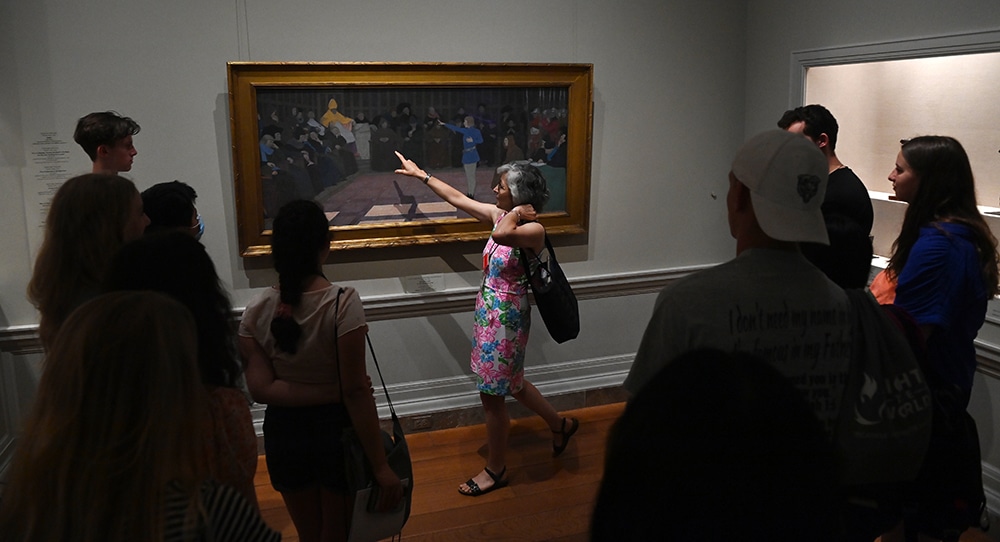
Heimann shared what is known about Joan of Arc’s image: She was described as small, very young, but strong, and beautiful, with short hair worn “like a fashionable boy,” meaning cut above the ears, Heimann said.
The statue head from Orléans referenced in the video is almost certainly not of Joan of Arc, Heimann said, adding that the French national archives lists it as a head of St. Maurice from the church of St. Eloi.
The statue’s helmet, she said, gives it away: “It’s not the right time period.”
She identified the earliest dated miniature portrait of Joan of Arc or Jehanne la Pucelle, meaning “Joan the Maid,” created around the year 1450. The image, now at the Bibliothèque nationale de France in Paris, appears in the first illustrated copy of Martin Le France’s 1440 poem championing heroic women, entitled Le Champion des dames, or Champion of Women, Heimann said.
The image shows the saint with shoulder-length light brown hair, in contrast with the short cut she is said to have worn, Heimann pointed out.
She also expressed admiration for the works of art depicting Joan of Arc found at the National Gallery of Art in Washington, D.C. She pointed to “The Vision and Inspiration” (Joan of Arc series: I) and “The Trial of Joan of Arc” (Joan of Arc series: VI) that are a part of a series of six canvases completed in the early 20th century by the French painter and children’s book author and illustrator Louis-Maurice Boutet de Monvel.
She called attention to their verve, artistic originality and careful attention to historic detail.
The character of a saint
When it comes to Joan of Arc’s image in art, Heimann said that she is more interested in what kind of a character an artist portrays than whether or not Joan is shown with hazel eyes or a full fringe over the forehead.
“I view her a little bit the way I view images of the Virgin Mary,” she said. “I’m not outraged if somebody comes along and says ‘she looks like this’ — unless they insist she really only looks like this.”
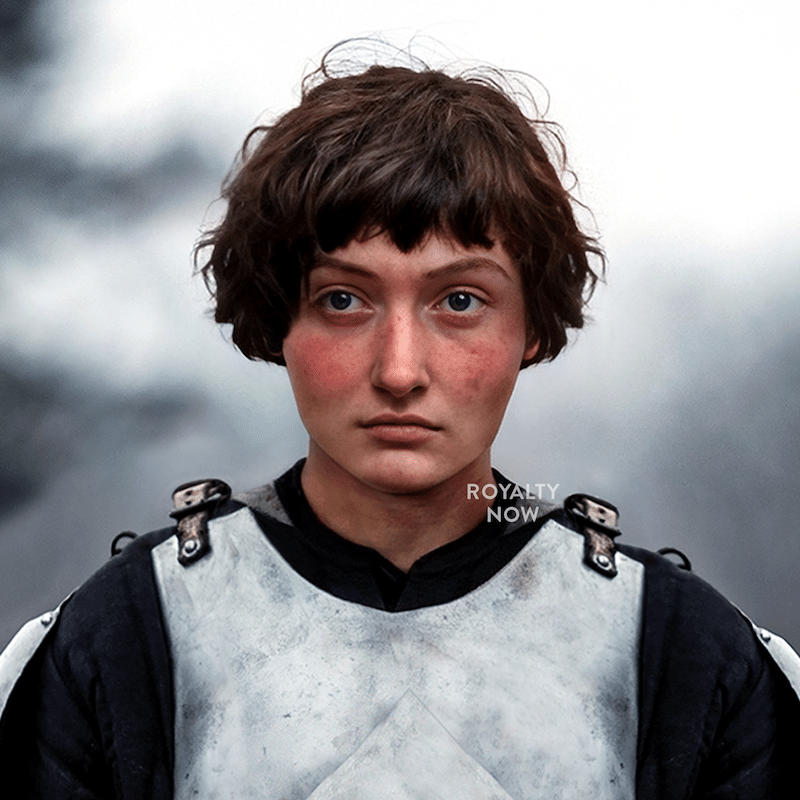
“It’s OK to imagine Joan (or Mary) however you want, I think,” Heimann added. “Because no life portrait of her survives, she has become a kind of silvery mirror into which we can look and see shining back at us a little bit of ourselves. ‘What do we want her to look like?’ — our aspirations for her have helped to determine her image across the centuries.”
Heimann explained that she is more concerned with how an artist depicts a saint, like Joan of Arc, as an example of humanity and sanctity, rather than as a portrait per se. But, she noted that she also understood that the portal in to understanding a figure of both faith and history is often through “an image that we can sympathize with.”
“If we think about saints as being figures that aspire to heroic virtue, that aspire truly to follow the will of God and to emulate Christ’s example, then it doesn’t matter whether or not they’re physically unattractive or gorgeous,” she concluded. “What matters is whether or not they’re beautiful in what they do, in how they love, in what example they offer.”

